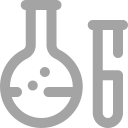
Product Description
Cisplatin is a antineoplastic chemotherapy drug which works by cross-linking with DNA and causing DNA damage in cancer cells.
IC50 & Target: DNA Alkylator/Crosslinker[1]
In Vitro: Cisplatin (CDDP) causes apoptosis of HeLa cells in a dose-dependent manner, with a concentration of 30 μM Cisplatin resulting in death of greater than 90% of the cell population by 24 h of treatment. The kinetics of Cisplatin-induced apoptosis are examined using a 30 μM concentration. Cisplatin Activates the MEK/ERK Signaling Pathway, 20 and 30 μM Cisplatin, both of which results in significant apoptosis, leads to strong activation of ERK[1]. Cisplatin (50 μM) produces time-dependent apoptosis in renal proximal tubular cell (RPTCs), causing cell shrinkage, a 50-fold increase in caspase 3 activity, a 4-fold increase in phosphatidylserine externalization, and 5- and 15-fold increases in chromatin condensation and DNA hypoploidy, respectively[2].
In Vivo: In melanoma-bearing mice, Cisplatin (4 mg/kg B.W.) reduces the size and weight of the solid tumors, and HemoHIM supplementation with Cisplatin enhances the decrease of both the tumor size and weight[3]. Cisplatin administration results in significant increases in the kidney weight as a percentage of the total body weight, urine volume, serum creatinine, and blood urea nitrogen
by about 132, 315, 797, and 556% in comparison with the control rats, respectively[4].

Information
CAS No15663-27-1
FormulaCl2H6N2Pt
Clinical Informationclinicalinformation
PathwayCell Cycle/DNA Damage
TargetDNA Alkylator/Crosslinker

Specifications
Purity / Grade>98%
SolubilityH2O : 1 mg/mL (3.33 mM; Need ultrasonic and warming); DMF : 14.17 mg/mL (47.23 mM; Need ultrasonic and warming)
Smilessmiles

Misc Information
Alternative NamesCDDP;cis-Diaminodichloroplatinum
Observed Molecular Weight300.05